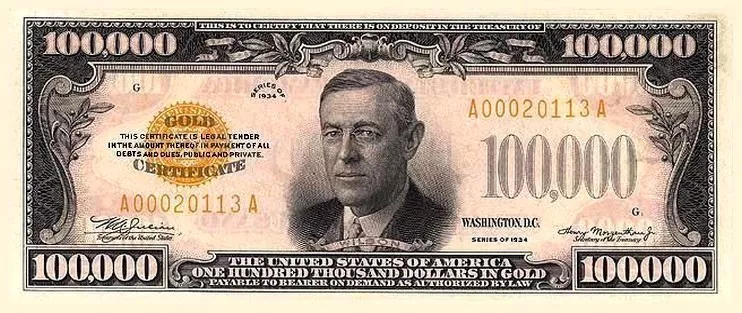Ah, the realm of currency, where greenbacks (money$$$$) reign supreme. But what about those forgotten denominations, tucked away in the annals of financial history? Unless you’re an avid collector or have a rich uncle, chances are you won’t stumble upon these pieces of history.
Let’s begin with the elusive $2 bill. It’s treated like a mythical creature when discovered. Newsflash: It’s not a unicorn, just a less common bill. But don’t expect to buy your morning coffee with it unless you enjoy perplexed looks from the barista. (The $2 bill is legal tender.)
Moving up the ladder, we encounter the $500 and $1,000 bills, adorned with presidential portraits like members of an exclusive club. McKinley is featured on the $500; and as for the $1000, Hamilton held the spotlight until Cleveland took over, likely causing a stir at the Treasury. Production of both bills was discontinued in 1969.
These high-denomination bills were originally created to facilitate large transactions between banks and wealthy individuals, back in the days when carrying around bags of gold wasn’t very practical. Additionally, the $5,000 and $10,000 bills were used for the same reason.
And then there’s the pièce de résistance: the $100,000 bill. This bill features Woodrow Wilson, a relic from the Great Depression.
Created for official transactions between Federal Reserve banks during a time of economic turmoil, it’s now as rare as they come. There are only twelve $100,000 bills in existence today. Two of them can be seen at the Smithsonian Institution. The others might be at the Bureau of Engraving and Printing or Federal Reserve museums.
It’s tempting to jest about bringing back these rare denominations, but they were crafted for dire situations. The $100,000 bill stands as a relic from the Great Depression. Higher denominations like the $500 and $1,000 bills were originally designed for large transactions, reflecting a bygone era of financial practices.
So while it’s amusing to ponder their return, they now serve as reminders of past economic hardships rather than practical options for currency.

